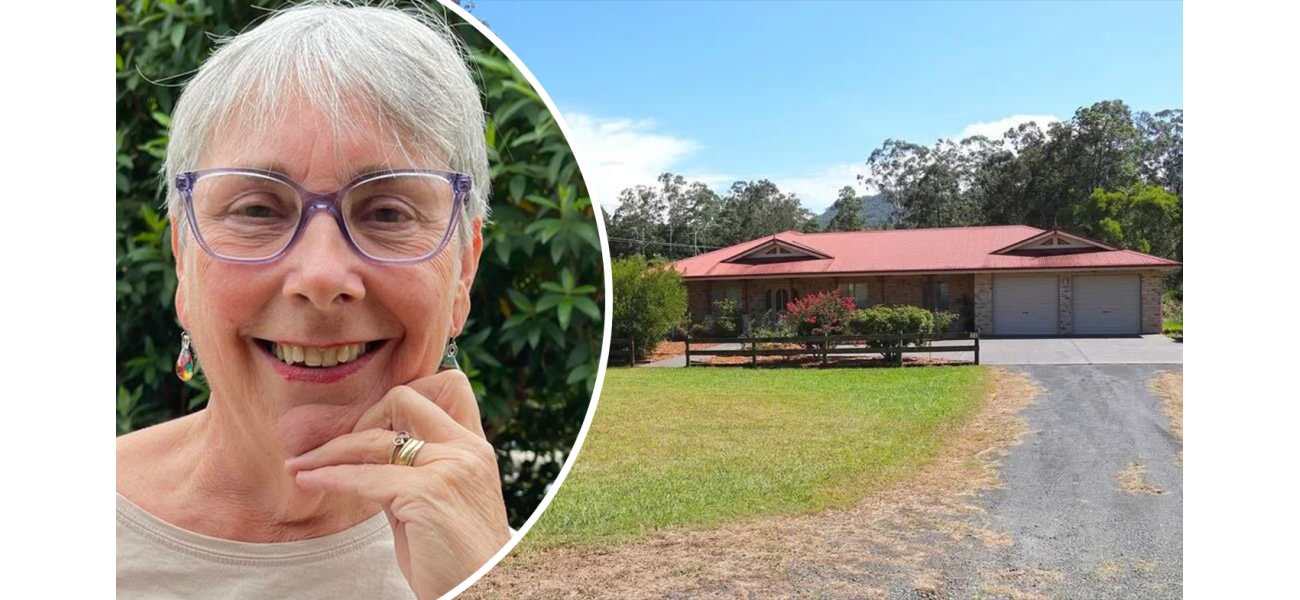Stephanie's insurance costs skyrocketed by 600% in just four years.
The bill has risen to $600, which she describes as "ballistic."
September 18th 2024.

In 2020, Stephanie Henderson was paying $94 a month for her home and contents insurance. However, she was shocked to find that her insurance bill has now skyrocketed to $600. That's an increase of almost 600 per cent over the course of just four years, which Henderson describes as downright "ballistic". As a pensioner, she and her husband rely on their fixed income and the sudden spike in their insurance bill has put a significant strain on their finances. "Between that and our health fund, half our income goes out. It's horrible. I'm having to dip into our savings just to pay bills," Henderson shared in an interview with 9news.com.au.
The rising cost of home insurance is becoming a widespread issue, with Canstar research showing an average increase of 13 per cent in annual premiums over the last 12 months. This amounts to an extra $286 that homeowners have to pay every year. The state of Queensland's northern region has seen the highest premiums, while South Australia has experienced the most significant percentage spikes. However, the Hendersons live in Lansdowne, a quiet town on the Barrington Coast of NSW, about 20km inland from the nearest beaches. Their three-bedroom home sits on a hectare of land and also backs onto a small creek, making it an ideal location for most Australians. However, Henderson claims that this is exactly what has caused her insurance premium to shoot through the roof.
In March 2021, Lansdowne was hit with severe floods that devastated the east coast of Australia. Though the Hendersons' house was not affected, their insurance premium started to increase after the water receded. "It has just gone ballistic since the floods. Not that we ever made a claim," Henderson said. "Every blade of grass on our property went underwater...but our house is well-built to withstand such situations, so we were fortunate to avoid any damage." Henderson's husband, Craig, had to make a last-minute dash into the rising waters to rescue four sheep they had on the property at the time. "He was watching TV when the power went out. He thought, 'I'll go and check on the sheep,' and found them almost up to their chests in water," Henderson shared. "He had to wade out with a rope and a small torch in his mouth to rescue them one by one."
Despite witnessing the devastation caused by the floods, Henderson believes that her insurance premium of $600 a month is outrageous. Earlier this year, she tried to find a cheaper policy but claims that most insurance companies refused to insure her home. "Half of the insurance companies I spoke to would hear our postcode, 2430, and immediately refuse to insure us," Henderson revealed. "They would simply say, 'We're not insuring that postcode.' End of discussion." According to Henderson, the companies cited her home as "high risk" but failed to provide specific reasons. She believes it has to do with the risk of future flooding as sea levels rise. In fact, research by Monash University and AON shows that about 370,000 homes in Australia are almost uninsurable due to their high risk of coastal flooding and erosion. Areas like Old Bar in NSW, just 20km from the Hendersons' home, are excluded from many insurance policies due to the "actions of the sea". Other areas are also excluded due to the risk of inland flooding.
Sharanjit Paddam, an actuary and lead author of the Actuaries Institute's Home Insurance Affordability and Home Loans at Risk report, explained that the increase in climate-related disasters like floods and fires is a significant factor in the rising cost of insurance. As a result, people living in high-risk areas face high premiums and insurance exclusions. "Consumers are now paying the cost of delayed action on climate change," Paddam stated. The Hendersons have had to dip into their savings to cover their $600 a month insurance bill, and they fear what will happen as the cost of living crisis worsens. "I do have a little bit of money saved in my super, but it's going fast. When it runs out, it runs out. Then we'll have to stop insuring," Henderson said. Canstar predicts that more homeowners may be forced to cancel or forgo renewing their policies as the cost of living continues to rise. For Henderson, who is still searching for a more affordable policy, going without insurance is starting to feel like the only option.
The rising cost of home insurance is becoming a widespread issue, with Canstar research showing an average increase of 13 per cent in annual premiums over the last 12 months. This amounts to an extra $286 that homeowners have to pay every year. The state of Queensland's northern region has seen the highest premiums, while South Australia has experienced the most significant percentage spikes. However, the Hendersons live in Lansdowne, a quiet town on the Barrington Coast of NSW, about 20km inland from the nearest beaches. Their three-bedroom home sits on a hectare of land and also backs onto a small creek, making it an ideal location for most Australians. However, Henderson claims that this is exactly what has caused her insurance premium to shoot through the roof.
In March 2021, Lansdowne was hit with severe floods that devastated the east coast of Australia. Though the Hendersons' house was not affected, their insurance premium started to increase after the water receded. "It has just gone ballistic since the floods. Not that we ever made a claim," Henderson said. "Every blade of grass on our property went underwater...but our house is well-built to withstand such situations, so we were fortunate to avoid any damage." Henderson's husband, Craig, had to make a last-minute dash into the rising waters to rescue four sheep they had on the property at the time. "He was watching TV when the power went out. He thought, 'I'll go and check on the sheep,' and found them almost up to their chests in water," Henderson shared. "He had to wade out with a rope and a small torch in his mouth to rescue them one by one."
Despite witnessing the devastation caused by the floods, Henderson believes that her insurance premium of $600 a month is outrageous. Earlier this year, she tried to find a cheaper policy but claims that most insurance companies refused to insure her home. "Half of the insurance companies I spoke to would hear our postcode, 2430, and immediately refuse to insure us," Henderson revealed. "They would simply say, 'We're not insuring that postcode.' End of discussion." According to Henderson, the companies cited her home as "high risk" but failed to provide specific reasons. She believes it has to do with the risk of future flooding as sea levels rise. In fact, research by Monash University and AON shows that about 370,000 homes in Australia are almost uninsurable due to their high risk of coastal flooding and erosion. Areas like Old Bar in NSW, just 20km from the Hendersons' home, are excluded from many insurance policies due to the "actions of the sea". Other areas are also excluded due to the risk of inland flooding.
Sharanjit Paddam, an actuary and lead author of the Actuaries Institute's Home Insurance Affordability and Home Loans at Risk report, explained that the increase in climate-related disasters like floods and fires is a significant factor in the rising cost of insurance. As a result, people living in high-risk areas face high premiums and insurance exclusions. "Consumers are now paying the cost of delayed action on climate change," Paddam stated. The Hendersons have had to dip into their savings to cover their $600 a month insurance bill, and they fear what will happen as the cost of living crisis worsens. "I do have a little bit of money saved in my super, but it's going fast. When it runs out, it runs out. Then we'll have to stop insuring," Henderson said. Canstar predicts that more homeowners may be forced to cancel or forgo renewing their policies as the cost of living continues to rise. For Henderson, who is still searching for a more affordable policy, going without insurance is starting to feel like the only option.
[This article has been trending online recently and has been generated with AI. Your feed is customized.]
[Generative AI is experimental.]
0
0
Submit Comment





